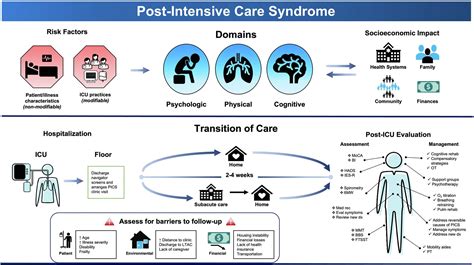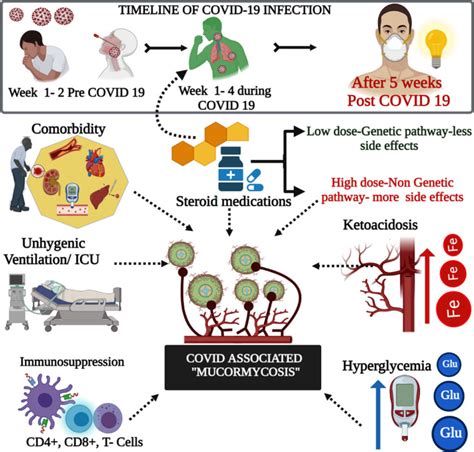In recent years, the field of veterinary medicine has experienced a technological revolution, bringing transformative advancements to pet healthcare. From sophisticated diagnostic tools to innovative treatments, these cutting-edge technologies are reshaping the way veterinarians diagnose, monitor, and treat our furry companions. Wearable tech, AI-driven diagnostics, and telemedicine are just a few of the innovations making pet care more precise and accessible. As these technologies continue to evolve, they promise to enhance the quality of life for pets and provide pet owners with more proactive and informed care options. This article explores the latest technological breakthroughs revolutionizing veterinary medicine and their impact on pet health and wellbeing.
Explore this topic in-depth with dominure.com
1. Advancements in Diagnostic Tools for Pets
Recent advancements in diagnostic tools are significantly improving the accuracy and efficiency of diagnosing health issues in pets. High-definition imaging technologies, such as digital radiography, ultrasound, and MRI, allow veterinarians to obtain detailed images of internal structures, facilitating early detection of diseases and injuries. These tools have revolutionized the way conditions like tumors, fractures, and internal organ abnormalities are identified and treated. Additionally, in-clinic laboratory equipment has advanced, enabling faster and more precise blood work, urinalysis, and other diagnostic tests. The development of non-invasive techniques, such as DNA testing and advanced biochemical assays, allows for the detection of genetic predispositions and early-stage diseases. These innovations are not only enhancing the quality of diagnostic care but also providing pet owners with quicker, more accurate information about their pets’ health, leading to better treatment outcomes and improved quality of life.

2. The Role of Wearable Tech in Monitoring Pet Health
Wearable technology has become an increasingly valuable tool in monitoring pet health, offering real-time insights into various physiological parameters. These devices, often in the form of collars, harnesses, or small attachable sensors, can track a wide range of data, including heart rate, respiratory rate, activity levels, and even sleep patterns. By continuously monitoring these metrics, wearable tech provides pet owners and veterinarians with a detailed picture of a pet’s overall health and well-being.
One of the key benefits of wearable technology is its ability to detect early signs of health issues. For instance, changes in a pet’s activity level or heart rate can signal potential problems, prompting early intervention before symptoms become more serious. Additionally, these devices can be particularly useful for managing chronic conditions, such as diabetes or arthritis, by allowing for precise monitoring and timely adjustments to treatment plans.
Moreover, wearable tech can help in behavioral monitoring, identifying stress or anxiety triggers, and providing data that can assist in behavioral training or modifications. The convenience and accessibility of these devices empower pet owners to take a more active role in their pets’ health management. As technology continues to advance, the capabilities of wearable devices are expected to expand, offering even more sophisticated and personalized health monitoring solutions for pets.

3. Innovative Treatment Technologies in Veterinary Care
Innovative treatment technologies are revolutionizing veterinary care, offering new and improved ways to treat a variety of conditions in pets. One of the most notable advancements is the use of laser therapy, which helps in reducing inflammation, pain, and promoting faster healing of tissues. This non-invasive treatment is particularly beneficial for pets suffering from arthritis, injuries, or post-surgical recovery.
Another significant innovation is the development of regenerative medicine techniques, such as stem cell therapy. This cutting-edge treatment harnesses the body’s own healing abilities to repair damaged tissues, offering promising results for conditions like osteoarthritis, spinal injuries, and even some chronic inflammatory diseases.
Additionally, advancements in targeted drug delivery systems are improving the efficacy and reducing the side effects of medications. Techniques like microsphere technology and nanoparticle drug delivery allow for precise targeting of affected areas, ensuring that medications are delivered exactly where needed.
These innovative treatment options are not only enhancing the quality of care pets receive but also providing new hope for conditions that were once considered difficult or impossible to treat effectively.

4. Telemedicine and Virtual Veterinary Consultations
Telemedicine and virtual veterinary consultations have become increasingly popular, providing a convenient and accessible way for pet owners to seek medical advice and care for their pets. This technology allows veterinarians to conduct consultations via video calls, enabling pet owners to receive professional guidance without leaving their homes. This is particularly beneficial for routine check-ups, follow-up consultations, or initial assessments of minor health issues.
Virtual consultations can help pet owners quickly determine whether a condition requires immediate in-person attention or can be managed at home with advice and over-the-counter treatments. This not only saves time and reduces stress for pets and their owners but also helps to prevent overcrowding in veterinary clinics, allowing veterinarians to focus on more urgent cases.
Additionally, telemedicine platforms often include features like electronic health records, which facilitate better tracking of a pet’s medical history and ongoing care. These records can be easily accessed and shared between veterinarians, ensuring continuity of care, especially in multi-pet households or when seeing specialists.
While not a replacement for in-person examinations, telemedicine provides a valuable complementary service, enhancing the overall accessibility and convenience of veterinary care.

5. AI and Machine Learning in Veterinary Diagnostics
Artificial intelligence (AI) and machine learning are transforming veterinary diagnostics by enhancing accuracy and efficiency in detecting and diagnosing diseases. These technologies analyze large volumes of medical data, such as imaging scans, lab results, and clinical records, to identify patterns and anomalies that may indicate health issues. For example, AI algorithms can quickly assess X-rays or ultrasounds, identifying abnormalities like tumors or fractures with high precision.
Machine learning models continuously improve their diagnostic capabilities by learning from new data, making them more accurate over time. This technology is particularly useful in identifying subtle changes that might be overlooked by the human eye, ensuring early and accurate detection of conditions.
Furthermore, AI-driven diagnostic tools can assist veterinarians in decision-making, offering treatment recommendations based on a comprehensive analysis of a pet’s medical history and current symptoms. This not only speeds up the diagnostic process but also helps in tailoring personalized treatment plans. As AI technology continues to advance, its role in veterinary diagnostics is expected to expand, leading to even more precise and efficient care for pets.

6. 3D Printing in Pet Prosthetics and Surgery
3D printing technology is making significant strides in the field of veterinary medicine, particularly in the creation of custom prosthetics and surgical aids. This technology allows for the precise manufacturing of prosthetic limbs, dental implants, and even orthopedic devices tailored to the specific needs and anatomy of individual pets. The ability to customize these products ensures a better fit and functionality, improving the quality of life for pets with limb loss or congenital deformities.
In addition to prosthetics, 3D printing is also revolutionizing surgical planning and execution. Veterinarians can use 3D-printed models of a pet’s anatomy to better understand complex cases and plan surgical procedures with greater accuracy. This is especially useful in delicate surgeries, where precise knowledge of the affected area can significantly reduce risks and improve outcomes.
Moreover, 3D-printed surgical tools and implants can be created quickly and cost-effectively, making advanced surgical options more accessible. As the technology becomes more widespread and affordable, its applications in veterinary care are expected to grow, offering innovative solutions for a wide range of medical challenges.

7. The Impact of Data Analytics on Pet Healthcare Outcomes
Data analytics is revolutionizing pet healthcare by providing valuable insights that enhance treatment outcomes and overall care. By analyzing vast amounts of data from electronic health records, wearable tech, and diagnostic tests, veterinarians can identify trends and patterns that inform more effective treatment strategies. For instance, data analytics can reveal correlations between certain symptoms and conditions, enabling earlier detection and intervention.
Moreover, predictive analytics helps in forecasting potential health issues based on historical data, allowing for preventive measures and tailored health plans. This proactive approach can lead to improved management of chronic conditions and more personalized care.
The integration of data analytics also supports better decision-making by providing evidence-based recommendations for treatment plans and medication dosages. Additionally, analytics tools can track the effectiveness of treatments over time, ensuring that adjustments are made as needed to optimize outcomes. As data analytics continues to advance, its role in refining and enhancing pet healthcare practices is set to expand, offering more precise and effective care solutions.

The integration of cutting-edge technologies in veterinary medicine is profoundly enhancing pet healthcare. From advanced diagnostic tools and wearable tech to AI-driven diagnostics and 3D-printed prosthetics, these innovations are transforming how veterinarians diagnose, treat, and manage pet health. Telemedicine and data analytics further support improved care by increasing accessibility and personalizing treatment plans. As these technologies continue to evolve, they promise even greater advancements in the quality of care pets receive, ensuring healthier and happier lives for our furry companions. Staying informed about these developments is crucial for both pet owners and veterinary professiona
dominure.com

